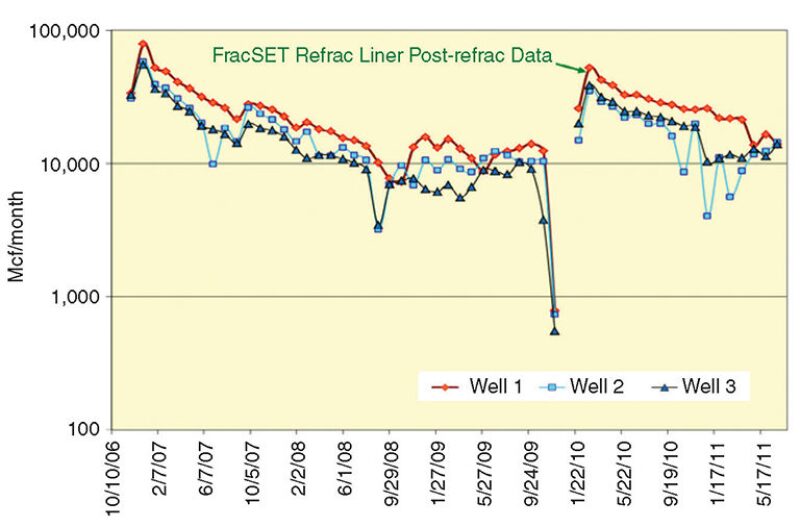Enventure Global Technology is working to convince operators that its solid expandable steel liners perform better than chemical diverter agents for refracturing operations. Its technology is called the ESeal ReFrac Liner.
Jerry Fritsch, global lead technical advisor at Enventure, said the key to a successful refracture depends on the operator’s ability to seal off the old perforations. Using expandable steel instead of a diverting agent, the company believes operators will have a much higher degree of certainty that they are stimulating new rock during the refracture.
“The real dilemma with trying to refrac with diverters right now is that there is just no control” of where the fracturing fluids will go, he said. However, if an expandable liner is run into the well instead of a diverting agent, then the operator carries out each individual fracture treatment much like when the well was originally completed. Once the old perforations are isolated, “you put a plug in there, you back up, and you perf,” Fritsch added.
Since 2009, the company has deployed its expandable liner technology for 15 refractures in the Barnett, Marcellus, Eagle Ford, and Anadarko basins. John Callais, vice president of western hemisphere at Enventure, said diverters have become the top choice for refracturing operations because they are cheaper than running in thousands of feet of expandable steel. However, the selling point for the company is that a new layer of steel is a far more reliable method of isolation than using diverting agents.
“It is a low-cost alternative up front, providing that the first slug of material works,” he said. “If not, you just continue to chase it with slug after slug after slug and it gets quite expensive at that point.”
Many diverting agents use a combination of chemicals and particulate matter that are pumped down a wellbore in doses called slugs. Using pressure pumps, the diverters are pushed into the open perforations to clog them up long enough to allow other perforations, sometimes new and sometimes existing, to be hydraulically fractured.
Enventure’s process starts by running milling tools through the existing production casing in preparation for the expandable liner. The expandable liner is then run down to the toe of the well. Next, an expansion cone is pumped from the bottom of the well to the top, which expands the liner to the maximum diameter and sets the elastomers that anchor the liner in place. Once the liner is expanded, the old perforations are completely sealed up and new perforations can be made and hydraulically fractured.
In general, Callais said the refracturing market is being stymied by low oil and gas prices. He said operators work with a budget of about USD 2 million for each refracture “and there is just not a lot of appetite right now for that type of expenditure,” he said. “The payback is just too far extended right now.”
To lower the barrier to entry for operators to use the technology, Enventure has developed a new hybrid concept that involves running an expandable liner through the heel section of a horizontal well only. The company has learned that most of the diverting agent and fracture treatment is lost in the heel section of a well, probably because pressures are highest in this section.

The hybrid refracturing solution would be an intermediate level option costwise because it would still use about 1,000 ft of the more expensive expandable steel, but potentially would require less diverting agent and deliver more fracturing pressure to the toe section of the well.
And in July, the company announced that it was collaborating with Quantico Energy Solutions to generate sonic and density logs in producing wells, which may identify new target zones for a refracture.


